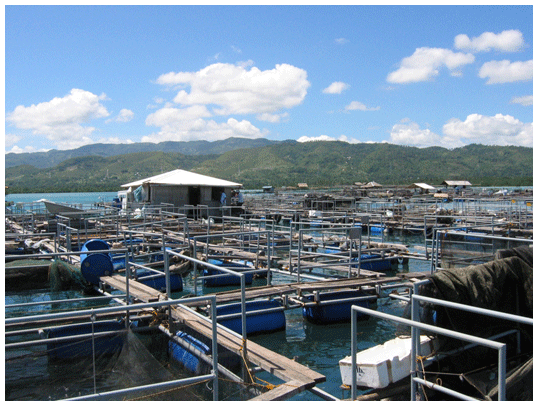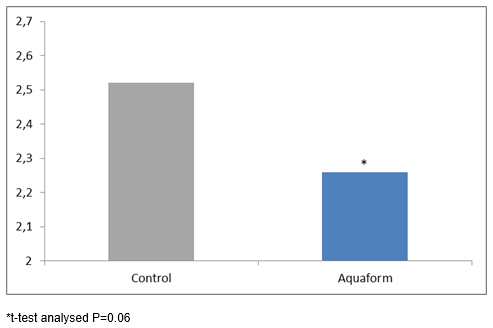Dietary potassium diformate (KDF) improves performance of milkfish, Chanos chanos, from mariculture in the Philippines*
Published: February 18, 2014
By: Christian Lückstädt†, Kai-Jens Kühlmann and Karsten Schroeder †ADDCON GmbH, 53113 Bonn, Germany
The milkfish (Chanos chanos Forsskål) is the most important cultured fish species in the Philippines. In 2011, almost 373,000 t milkfish were produced there (FAO, 2013), around 42% of its entire world production. A significant part of the Philippine production is achieved semi-intensively, or even intensively, which creates a demand for supplemental feed. Optimizing of the feeding and nutrition of milkfish is therefore of great interest. Dietary potassium diformate (KDF) is widely used in modern fish and shrimp aquaculture. Numerous reports, including a meta-analysis, have been published on the effects of KDF in fish on growth performance, nutrient digestibility and pathogenic bacterial growth. Effects of the additive on milkfish have however not been reported so far.
A series of trials was therefore carried out at a fish farm in Carcar City, Cebu, Philippines. The aim of the trials was to test 0.3% dietary KDF against a negative control under similar conditions in marine cages (Fig 1.).
Fig 1: Marine cage farm for milkfish in the Philippines

In the first trial, 99,000 juvenile milkfish were randomly allocated to two experimental groups. Fish were fed a commercial milkfish diet. Performance and mortality were regularly monitored. The effects of 0.3% KDF on milkfish reared in marine cages over a period of more than 300 days are displayed in Table 1.
Table 1: Performance of milkfish fed with or without KDF

As can be seen from the table, the application of KDF into the milkfish diet led to an increased average daily weight gain by more than 13%, while the feed conversion ratio (FCR) improved by more than 10% (Fig 2.). More importantly, this was achieved with a reduction in “time to the market” by more than 9% or in other words, the culture period was shortened by 18 days.
Figure 2: Feed conversion ratio (FCR) of milkfish fed with or without potassium diformate (Aquaform)

The second trial investigated not only the performance parameters of milkfish, but also analysed carcass quality parameters. This time, 149,500 juvenile milkfish were randomly allocated into 2 experimental groups. Fish were fed a standard diet (commercially available milkfish feed) over at least 155 days’ culture period. Performance and quality parameters were monitored. Data were subjected to statistical analysis and a significance level of 0.05 was used in all tests.
Despite a smaller initial size of the fish and shorter trial duration, milkfish fed with KDF had a higher final weight by almost 3% (Tab. 2). Due to pooled samplings and thus a low number of replicates this difference was not statistically significant. More important however was the significant improvement of milkfish body condition and carcass. Here, especially the length, weight and thickness measurements of the fish body improved significantly (sub-sample, n=12). Furthermore, the size of the milkfish belly increased significantly (Fig. 3). This may be attributed to a better protein and fat digestibility, which had been reported previously in other fish species.
Table 2: Morphometric, growth and carcass parameters of milkfish fed with or without KDF

Figure 3: Milkfish belly – a delicacy in the Philippines

It can be therefore concluded that dietary potassium diformate is able to improve milkfish growth performance and body condition and may play an important role in increasing the market value of the fish due to improved belly quality parameters. This demonstrates the significant beneficial and commercially important effects of potassium diformate on milkfish. The significant improvement of the feed efficiency, as well as the improvement of the “product quality” are key steps towards a profitable and sustainable aquaculture, especially in times of high raw material and feed prizes.
*partly published at the 10th Meeting of the Ichthyological Association, Bonn, Germany, 2013
Related topics
Authors:
Join to be able to comment.
Once you join Engormix, you will be able to participate in all content and forums.
* Required information
Would you like to discuss another topic? Create a new post to engage with experts in the community.
Create a post


.jpg&w=3840&q=75)